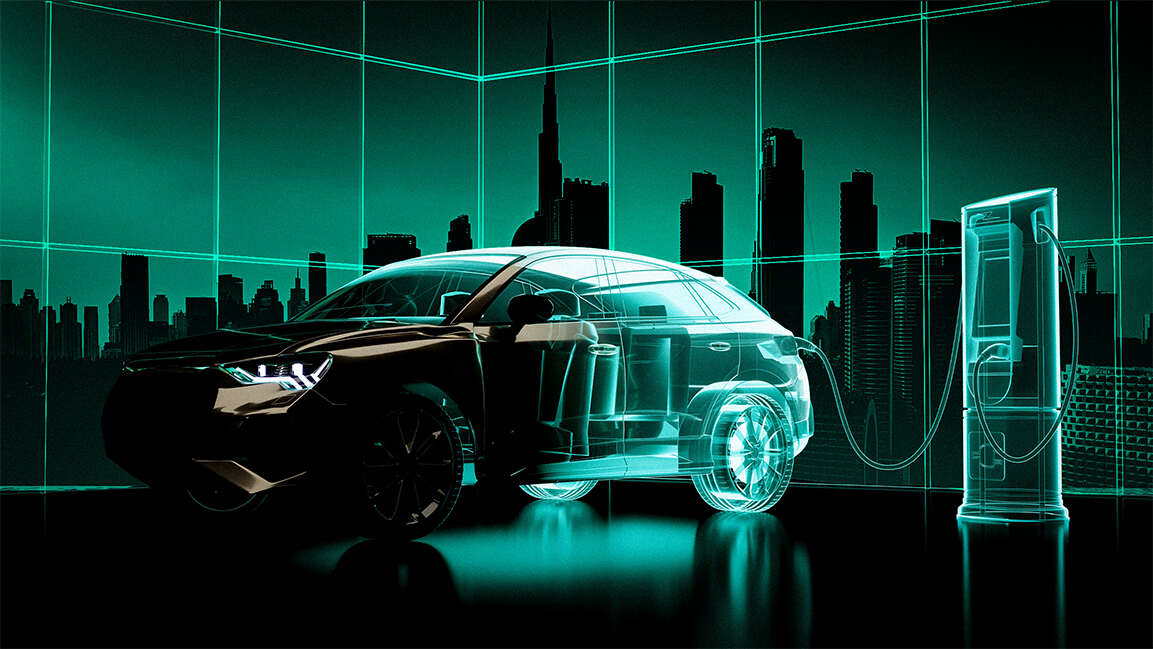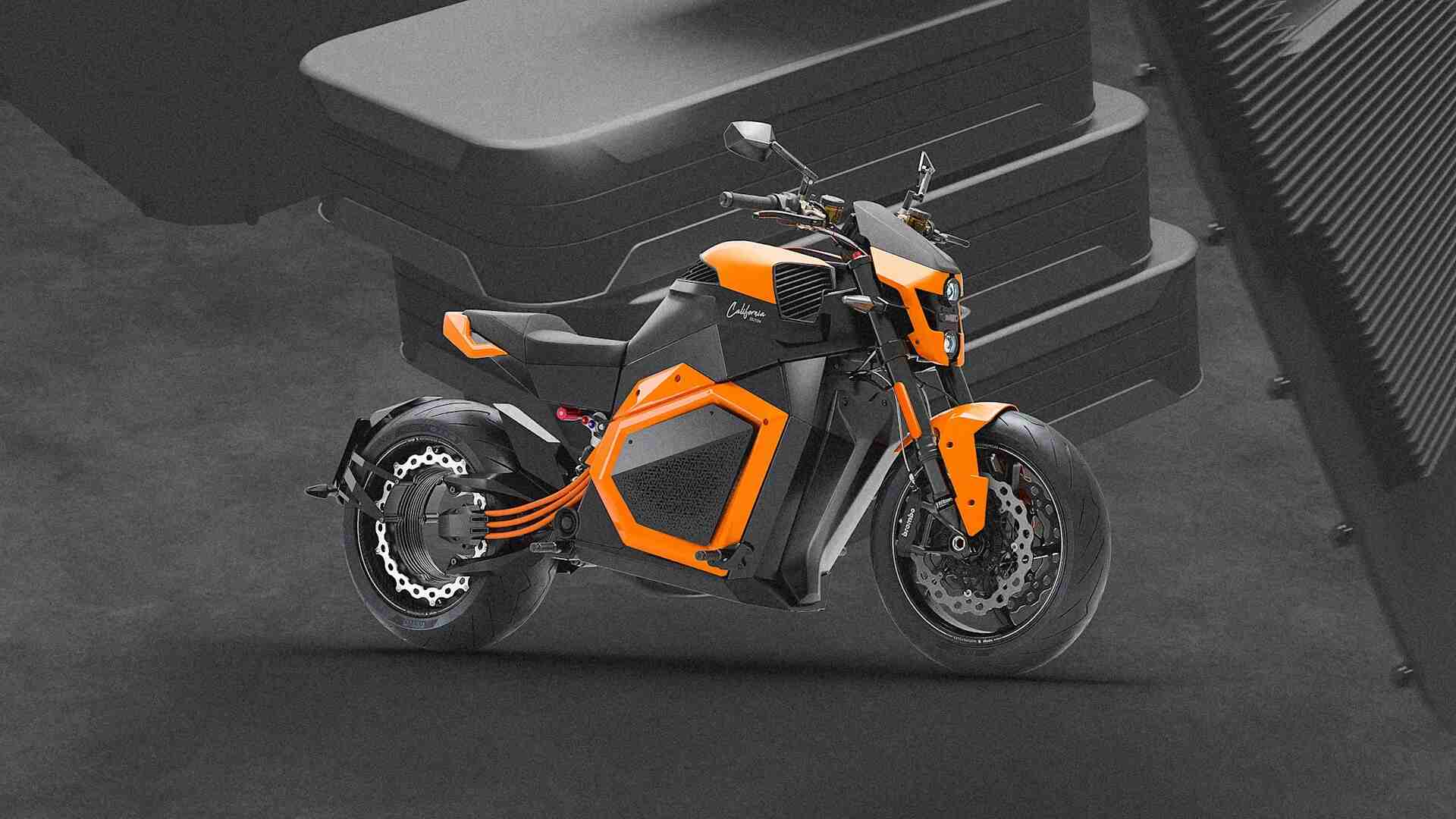- | 9:00 am
The Middle East’s EV ambition is bold, but is it realistic?
From charging infrastructure to consumer trust, here’s what needs to change to accelerate adoption.

Electric vehicle (EV) adoption is gaining momentum globally, with sales rising 25% year-over-year by last November, reaching 15.2 million units. EVs accounted for 20% of all cars sold globally in 2024. In the Middle East, however, the shift to EVs is progressing more slowly.
While countries like the UAE and Saudi Arabia are investing heavily in EV infrastructure—with the UAE aiming for 50% of all vehicles on its roads to be electric by 2050 and Saudi Arabia targeting 30% EVs in Riyadh by 2030—widespread adoption across the region remains limited.
Key challenges include underdeveloped charging networks, high upfront vehicle costs, extreme climate conditions that can impact battery performance, and a market still heavily reliant on fossil fuels.
According to Sebastian Fuchs, Managing Director of AutoData, the rise of EVs poses both a challenge and a strategic opportunity for the region’s leading automotive companies. “Many of the leading automotive players have already aligned themselves with emerging EV brands,” Fuchs says. “The key lies in selecting the right partnerships and leveraging existing infrastructure across their portfolio. Strategic alignment — particularly in after-sales, service, and distribution — allows groups to mitigate overheads while capitalizing on future mobility trends.”
As governments begin rolling out regulatory frameworks and incentives to promote clean energy adoption, the Middle East’s automotive sector must navigate a careful balance—adapting to global electrification trends without disrupting its long-standing economic foundations.
A TRANSITIONAL PHASE, NOT A STALL IN GROWTH
Despite ambitious targets, high costs, limited model options, and lingering dependence on fossil fuels, consumer demand is cooling. “The current market landscape is mixed,” says Fuchs.
Describing the current moment as a natural transition, Elie Nehme, General Manager at Soueast UAE, says, “Growth hasn’t stalled—but the pace is moderated by infrastructure readiness, charging availability, and the ongoing need for consumer education.”
In this context, plug-in hybrid electric vehicles (PHEVs) are playing a crucial role. For brands like Soueast, models such as the S06 DM serve as a strategic solution—offering consumers a balance between environmental responsibility and practical utility, catering to drivers who are open to greener mobility but still wary of fully electric constraints. These hybrids are defining the region’s near-term path to electrification.
Meanwhile, Jesico Gonsalves, General Manager of Jetour UAE, characterizes the current period as a “strategic recalibration”. “Interest in electrified mobility remains strong, but widespread adoption depends on the pace of infrastructure development, regulatory support, and growing consumer familiarity,” he says.
Jetour UAE, in partnership with Elite Group Holding, recently launched the T2 i-DM, a plug-in hybrid SUV that eliminates range anxiety and infrastructure dependency. “Together, we’re bridging the gap, building consumer trust, and laying the groundwork for broader EV adoption,” Gonsalves adds.
Even with new EV models entering the market, consumer sentiment in the Middle East remains mixed. According to Fuchs, the region is in what he calls an “EV autumn”—a transitional period marked by momentum and hesitation.
In some cases, early adopters return to hybrids or even conventional vehicles after facing challenges with range, charging logistics, or service support.
Consumers are increasingly weighing long-term usability and infrastructure readiness against the promise of sustainability. It suggests that trust in the EV ecosystem—not just the vehicles themselves—will be key to future growth.
CONSUMER HESITATION: EV RESALE VALUE
Another factor slowing EV adoption in the Middle East is uncertainty around resale value. With many consumers viewing their vehicle as a long-term investment, questions about depreciation, battery health, and future market demand weigh heavily on buying decisions—particularly in a market still building its EV infrastructure.
“Resale value in the EV segment isn’t uniform — it depends on the brand, battery performance, and market maturity,” he says. While many EVs still trail behind internal combustion vehicles in resale performance, some models already exceed expectations. “For well-informed buyers, these represent compelling alternatives,” he adds.
This inconsistency makes it difficult for consumers to feel confident, especially in emerging markets where used EV ecosystems are still under development. Gonsalves says, “Resale value in the EV space is still maturing.”
Nehme sees plug-in hybrids as a strategic solution in today’s climate of cautious consumer sentiment. “While EV resale values are steadily improving with advancements in battery tech and growing support programs, plug-in hybrids remain the more reassuring choice for buyers today.”
Gonsalves adds that key factors such as battery health, brand trust, and robust after-sales support play a vital role in maintaining value.
THE INFRASTRUCTURE PROBLEM
In a region where EV infrastructure is developing slowly, and there is increased skepticism over its adoption, experts say EV growth and further expansion will take longer.
Highlighting current coverage is not enough, Fuchs says, “The current infrastructure is insufficient to support the growth trajectory many anticipate.”
But the challenge goes beyond simply adding more chargers. “The issue lies not only in volume, but in adapting to rapid advancements in charging technology. This requires thoughtful, long-term planning—particularly around space, grid capacity, and urban development.”
As cities evolve and transportation patterns shift, building scalable, future-proof infrastructure will be crucial to meet the rising demand for EVs.
Many brands recognize the infrastructure gap and turn to plug-in hybrids as a transitional solution. “Widespread adoption of electric vehicles is closely tied to the availability of robust, reliable charging infrastructure,” Gonsalves says.
“Our phased approach ensures we’re meeting market needs now while actively preparing for a fully electric future,” Gonsalves adds, alluding to the flexibility of plug-in hybrids that allow consumers to adopt electric mobility without being constrained by charging limitations.
FUTURE-PROOFING THE ECOSYSTEM
Increasing EV adoption in the Middle East isn’t just a matter of supply—it’s about creating the right conditions. From consumer incentives to infrastructure investment and product diversity, industry leaders agree that long-term success depends on a multi-layered, collaborative approach.
For Nehme, the key lies in balancing affordability, accessibility, and innovation. “Increasing adoption requires a long-term, agile mindset—grounded in affordability, infrastructure, and forward-thinking partnerships,” he says. “It’s not just about introducing EVs; it’s about building a smart, sustainable ecosystem that works now and evolves with the market.”
Fuchs adds that OEMs are already responding with more flexible ownership models. “From attractive lease packages with guaranteed buybacks to complimentary home charging units, we’re seeing creative solutions emerge,” he says. However, he emphasizes that government policy remains a critical lever. “Widespread adoption hinges on reliable public charging networks and supportive policy frameworks. Regulatory clarity, emissions targets, and financial incentives have proven to be the most effective catalysts globally—though these require thoughtful implementation to fit local dynamics.”
Gonsalves reinforces this, pointing to the need for a market-sensitive, inclusive strategy. “Adoption will grow through continued government incentives, stronger public education, and critically, the introduction of vehicles that suit a variety of lifestyles and budgets,” he says.
While challenges remain, the shift is already underway—led by brands and stakeholders willing to think long-term, act collaboratively, and meet consumers where they are.







































